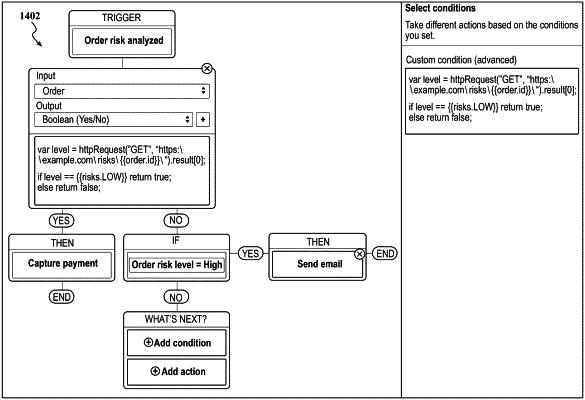| CPC G06F 8/35 (2013.01) [G06F 8/20 (2013.01); G06F 8/34 (2013.01); G06F 8/38 (2013.01); G06F 8/75 (2013.01)] | 21 Claims |

|
1. A computer-implemented method comprising:
parsing programming code associated with a workflow to generate functional boundaries between workflow components of the workflow;
displaying a representation of a particular workflow component of the workflow, the representation including a depiction of a functionality associated with the particular workflow component and a view of the programming code for providing the functionality associated with the particular workflow component;
receiving a modification to the functionality associated with the particular workflow component, the modification including a change to the programming code for providing the functionality associated with the particular workflow component;
determining that the modification to the functionality associated with the particular workflow component comprises a significant change to the programming code associated with the particular workflow component; and
in response to determining that the modification comprises a significant change:
re-parsing the changed programming code associated with the workflow to determine that the change to the programming code extends the functionality of the particular workflow component beyond the functional boundaries of the particular workflow component;
generating revised functional boundaries based on the re-parsing; and
updating the displayed representation of the particular workflow component to split the particular workflow component into more than one workflow component based on the revised functional boundaries, wherein the depiction of the functionality associated with the particular workflow component is updated based on splitting the particular workflow component into the more than one workflow component to reflect the modification and the functional boundaries between the more than one workflow component.
|